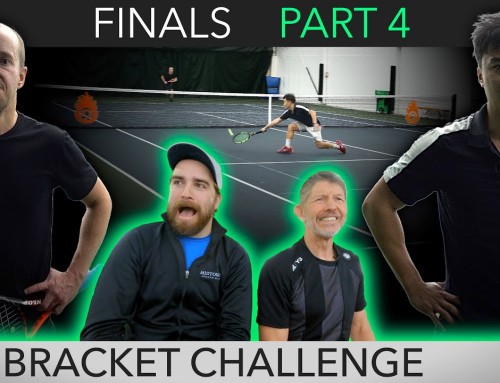When it comes to amateur tennis players, there are those who enjoy the game and those who are obsessed. My student Rob is one of the obsessed ones. Born, raised, and currently living in Detroit, he belongs to two (yes, two) tennis clubs, just so he can be sure to get a court during vicious Michigan winters.
Rob is a 4.0 player in his 40s. He came to me because he wanted to develop an offensive weapon — a shot or shots that would help him put opponents away and end points on his terms.
After a couple minutes of light sparring, I recognized exactly what was holding Rob back: he hit with tons of topspin but had no ability to drive through the ball with power. Topspin is what keeps the ball in the court, and it causes the ball to kick up after it lands, but too much topspin leads to short groundstrokes that bounce around the service line. So it was with Rob. His groundstrokes were high and spinny. When he won points, it was because his opponents screwed up, not because Rob hit a winner.
Using video, Rob and I discovered that his normal swing path was so vertical (low to high) that it had virtually no horizontal component. Even when he attempted to swing flat, he still swung up at about a 40-degree angle.
To get him to swing flat, I used one of my favorite techniques: tricking students into using correct technique. Instead of asking Rob to swing flat, I instructed him to swing high to low. It was only after asking for an extreme downward swing that he finally leveled things out and succeed in hitting a solid drive. And in hitting winners that put opponents away.



